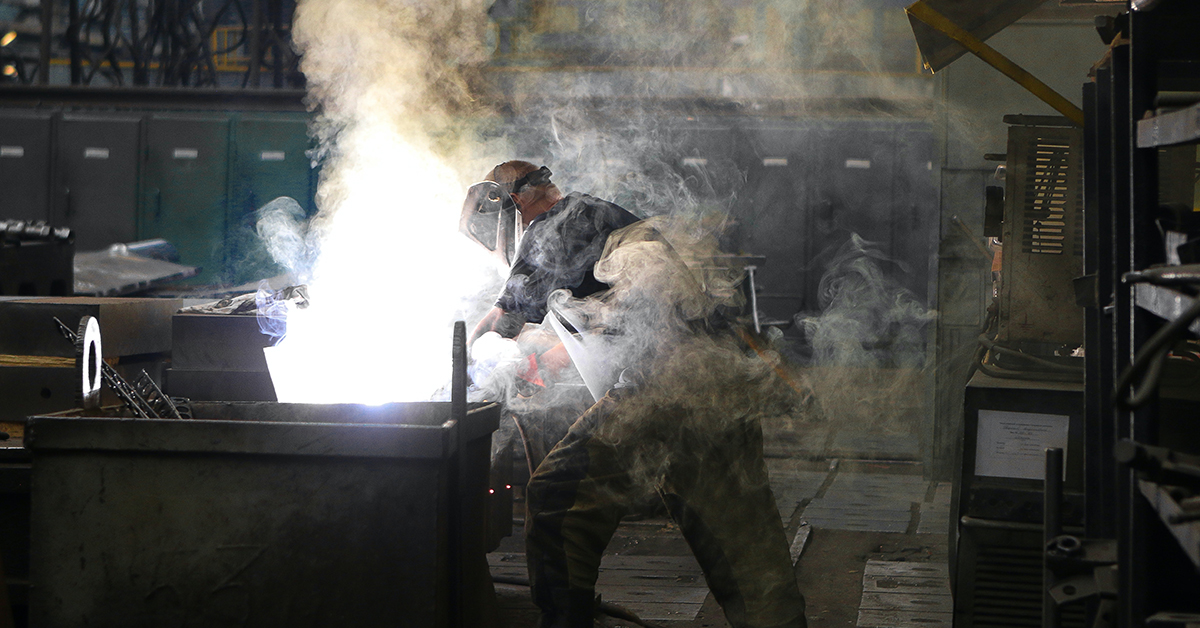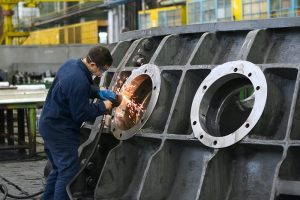
Industrial trash compactors are designed and built to save labor time. Reducing labor for the removal of trash materials from a facility can be realized by minimizing the volume of trash being transported and by reducing the distances the trash has to be moved to get from where it is produced to the trash compaction point. A trash compactor can immediately improve productivity, which is a huge plus. Using a mobile trash compactor can cut down on trash hauling by as much as twenty to thirty trips per week.
Employees benefit from the time savings, and the likelihood of those elusive inventory losses is diminished. Trash is compacted before being transported via hand cart, which means no more heavy lifting or bulky safety gear is required. You can better utilize your building and loading dock spaces because the compacted garbage only takes up about one-eighth to one-tenth as much room as uncompacted garbage.
Why Manufacturing Facilities Need Industrial Compactors
 Using an efficient industrial trash compactor allows manufacturing facilities to have fewer trash collection pick-ups. Fewer trucks coming in means less traffic and less wear and tear on your infrastructure. Industrial waste compactors are especially useful at facilities with higher security protocols that want to cut down on the number of vehicles going in and out.
Using an efficient industrial trash compactor allows manufacturing facilities to have fewer trash collection pick-ups. Fewer trucks coming in means less traffic and less wear and tear on your infrastructure. Industrial waste compactors are especially useful at facilities with higher security protocols that want to cut down on the number of vehicles going in and out.
There is a growing awareness of the need to reduce the amount of commercial waste sent to landfills thanks to the proliferation of “zero waste” initiatives across the country. A trash compactor can have one of the greatest immediate impacts on lowering your company’s carbon footprint and improving your brand’s green reputation by decreasing the amount of trash sent to the landfill and making it simpler for businesses to manage recyclables and compost materials.
Meeting Safety Needs
Waste materials overflowing from carts, gaylords, and dollies can easily become a safety or even a fire hazard. With the proper compactor, manufacturing facilities can provide a safe work environment as well as reduce labor time by keeping floors and docks free from unnecessary clutter. Because employees won’t need to break down boxes, packaging materials, and other unmanageable debris by hand, labor time can be reduced, improving workflow. Lessening or even removing risk from slip and falls caused by spills and messes also improves labor efficiency. Add to that reducing the frequency in which workers will need to make trips to the dumpster or work around extra heavy equipment traffic, and the gains to a safer work environment are easily seen.
Why the RotoPac Saves Labor Time
 Because of the proliferation of types and sizes of industrial trash compactors, this article will focus on one that efficiently reduces the volume of waste materials by most efficiently compacting the trash as close as possible to its source, an industrial rotary trash compactor.
Because of the proliferation of types and sizes of industrial trash compactors, this article will focus on one that efficiently reduces the volume of waste materials by most efficiently compacting the trash as close as possible to its source, an industrial rotary trash compactor.
A primary design criterion of a rotary trash compactor for it to be practical in most industrial facilities is that it must have a small footprint, i.e., slightly larger than a standard pallet. The KenBay RotoPac fits the bill. This industrial rotary arm waste compactor can be placed almost anywhere on the facility floor without interfering with production operations. The ideal placement is as near to the production line as possible, minimizing the distance from the sources of waste. In this way, the labor time collecting the trash, whether by cart or forklift, and transporting it to where it will be compacted is reduced.
Another design feature of the RotoPac is that trash can be placed into it in the following ways:
- Manually through the loading door
- Pneumatically by blowing trash, such as trim, into the top
- Conveying larger trash items into the top
- Through a chute from an upper floor or mezzanine
The design feature of an open top for the input of trash, with or without a photo eye option to control the flow of waste material, reduces or eliminates all manual labor. If the trash can be placed on a conveyor or into a blower automatically, labor, labor costs, and labor time of inputting waste into the compactor are reduced to nothing.
And high compaction rates also contribute to labor savings. The RotoPac, on average, produces a compaction rate of 6 to 1 in compacting the trash into large polyethylene bags forming a metric cube. As trash volumes are reduced 6 times, the cost of transporting the trash, by forklift, to a hauler’s container can be reduced as much as 6 times. The same labor costs and time savings apply to industrial waste disposal costs paid to the hauler.


